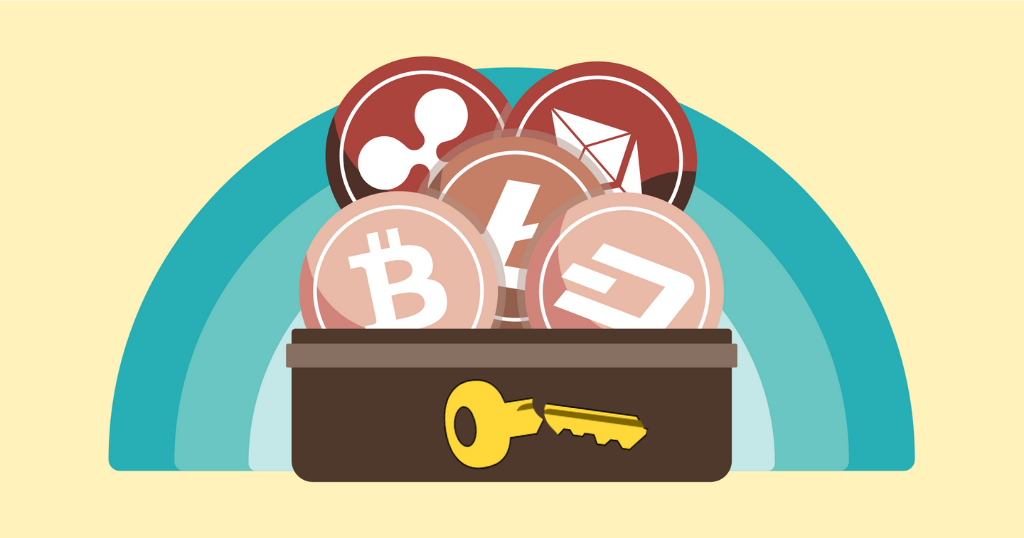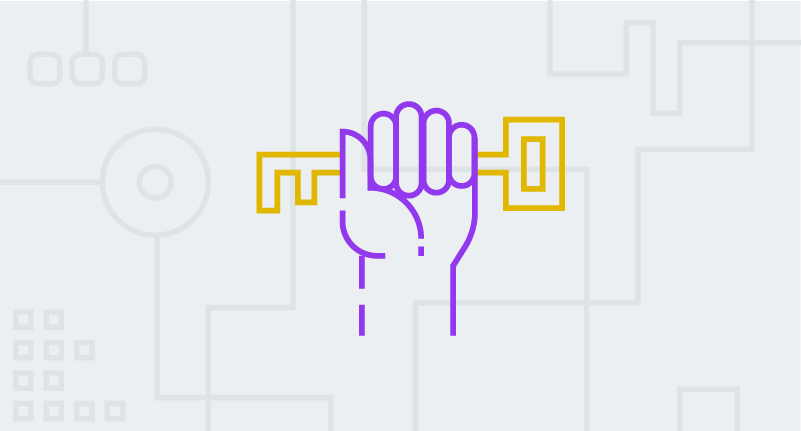What is the first thing you need to think about once you’ve made up your mind, decided to join the blockchain scene and to trade some of your savings for cryptocurrency? You have to figure out where you’re going to store your crypto funds. It’s been ten years since Bitcoin, the first crypto was launched, and hundreds of virtual wallet cryptocurrency services have appeared over this time.

Pros and Cons
These wallets, or crypto payment gateways, can be divided into two large groups: custodial and non-custodial. Custodial wallets are closer to what newer blockchain users can be used to – internet banking. Just like your bank can take care of the problem in case you forget your password or mess up the bank details while doing a money transfer, a custodial wallet service can back you up in some similar situations — help you restore access to your money or getting your crypto payment unstuck in the blockchain.
The catch? You don’t have access to your own private keys. The custodial wallet service stores them on their servers — basically, this is the very situation where a third party can access your information. Your funds can get frozen due to KYC or AML requirements. In the worst case, such services can get hacked, and if they do, your money can get stolen.
Non-custodial wallets are, on the other hand, exactly what first comes to mind when you think about blockchain: in the decentralized system, you are the only one who can access your crypto funds. Upon getting yourself a non-custodial wallet, you’re provided with encrypted keys that are stored on your device. Normally, this is considered to be the safest way to store your cryptocurrency. In this article we’ll be talking about non-custodial crypto wallets’ advantages and disadvantages for regular cryptocurrency users and business owners, and about the best ways to use them.
Non-custodial wallets can, in turn, be divided into two smaller groups: software wallets and hardware wallets. The former are, as the name suggests, different software that can run on devices you already own: they can be websites, PC programs, smartphone apps. Out of all crypto wallets, they are the most accessible and the easiest to use. You are going to need an internet connection for them to work. Hardware wallets, on the other hand, are the devices themselves, such as USB flash drives, on which you can store your funds offline.
Custodial versus non-custodial wallets
| Custodial wallets | Non-custodial wallets |
| Your money or data could get stolen | Lack of risk that your money or data could get stolen |
| Custodian or third party providers have control over your funds | Only you control your funds |
| High fees to the custodian | No custodial fees |
| Slower transactions because of KYC/AML checks | Faster transactions as no approvals are needed |
| Accounts can be restored in case of lost keys | Funds cannot be recovered in case of lost keys |
Like we mentioned above, the best thing about working with custody-free services is the lack of risk that your data can get compromised or your money get stolen. You are the only person to have 100% control over your (or your company’s) funds. There are, however, many other, less obvious pros of going custody-free. You don’t have to pay high fees to the custodian, which already sounds nice enough. If you have your own business, you can swap coins and carry out transactions and crypto payments easier, without having to worry that your custodian won’t approve the transaction or will freeze your funds altogether for whatever reason.
What is more, software and hardware non-custodial wallets have their own respective advantages. The former are incredibly easy to use, don’t cost anything to download, and most of them have detailed user guides. The latter are the most secure of all wallets: since they are actual physical objects, it would be quite difficult for hackers to access them. If you’re a hardware wallet user, you need to go online only when you have to swap coins or pay in cryptos, which means your wallet is rarely online and increases your security even more.
While this all sounds appealing, it is necessary to mention that going custody-free has its disadvantages, too. Whether you’re naturally an absent-minded or forgetful person, or just don’t fully trust yourself, the idea of being the only one to be able to access your crypto funds might scare you off. Worry not: there are multiple ways to protect yourself from losing your money.
So how do you want to secure your crypto assets?
How do non-custodial crypto payment gateways work? As your crypto funds are securely stored in the wallet, you get private keys that are encrypted and stored on your device. What happens if your mobile phone or laptop gets broken or stolen? There is a way to restore your access to your funds: upon creating a wallet, the application generates a secret word combination consisting of twelve (sometimes it’s twenty-four) random words. This is your mnemonic seed you need to use to restore access to your money.
There are certain rules that apply to using the mnemonic seed. Under no circumstances should you tell it to anyone, store it on a device or even just type it on websites. If you are worried you aren’t able to memorise your seed (which is a valid reason to worry: not everyone can memorise twenty-four random words), write it down on a piece of paper (make at least two copies) and store it securely. Better safe than sorry! This way you won’t lose access to your funds even in case of an emergency.
As well as pros, software and hardware wallets have their respective cons, too. Even though software wallets provide a significantly higher level of security than custodial wallets, the user can still suffer from fraud: many popular smartphone apps have fake copies on app stores, which are strongly not recommended to use. It is a good idea to look up the apps on the official sites of crypto wallets, which normally have links to AppStore and GooglePlay. As for hardware wallets, you need to be careful so they don’t get infected with malware. Moreover, you will probably want to make sure you are buying a brand new device nobody has tampered with: otherwise, the money you store it isn’t safe, and neither are your crypto payments.
Conclusion
At the end of the day, even though using non-custodial wallets has its disadvantages, they can be successfully dealt with. Read up on possible problem solutions, make sure you don’t lose your mnemonic seed, don’t post it online or download suspicious wallets — and you’re good to go. We wish you nothing but good luck in your further blockchain journey.

